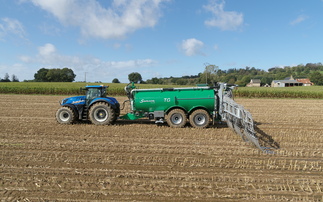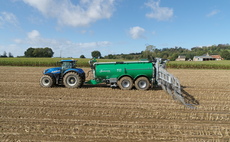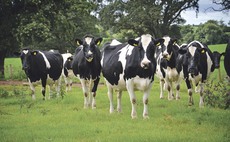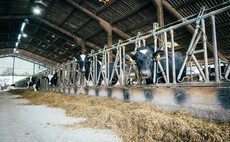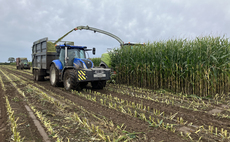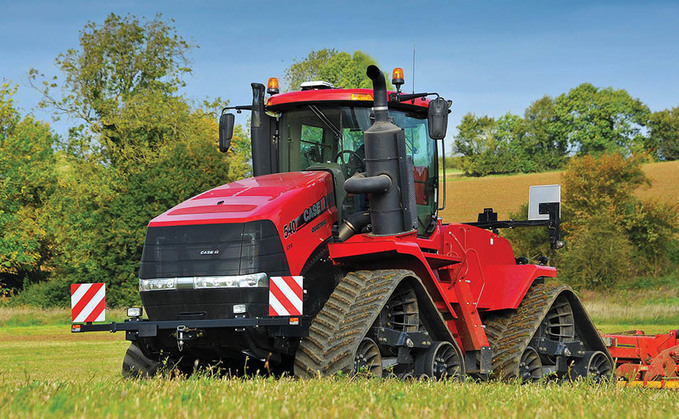
Extending its CVX line-up, Case IH is now offering its Quadtrac tractor with the option of a continuously variable transmission.
But how much of a difference will it actually make to the tractor? James Rickard finds out with a test drive...
For all intense and purposes, the Case IH Quadtrac, along with its other heavy metal competitors, are essentially just self-propelled drawbars with limited versatility, primarily suited to heavy draft work only.
However, as covered by �������� Guardian from its Agritechnica preview event last year, Case IH reckons it has added a few more feathers to its Quadtrac's cap by introducing a continuously variable transmission (CVT) version.
In doing so, this gives the tractor the ability to seamlessly adjust travel speeds from 0 to 40kph.
Paul Freeman, Case IH product marketing specialist says; "We've been asked for a number of years to produce a CVT tractor of this size.
"Depending on the job, the nature of a CVT means it should be more efficient than a powershift, particularly in the UK's varying conditions - it is not like the flat plains of the US, where one gear will suit a whole day's work."
The CVT option will be available on Quadtrac 470, 500 and 540 models, identified by Case IH's CVX designation.
Similarly, it will be available for the wheeled Steiger 370 to 540 models. In both cases, due to the transmission's limitations, the top two models (580 and 620) will not be available with this transmission option.
Pricewise, a CVX Quadtrac will cost about £26,000 more than a powershift version. But is it worth it?
In the field
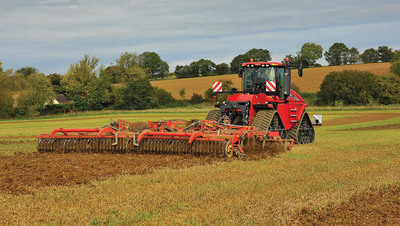
The biggest thing a CVT brings to the party is its adaptability, which is constant. For every change in gradient or soil type, a CVT will automatically always try and achieve the desired target speed by altering engine speed and transmission ratio.
Because of the high loads involved, this has a very noticeable impact on the Quadtrac's performance, which sees engine revs significantly backed off when not required, but forward speed kept up.
During uphill runs with a 7m Vaderstad TopDown cultivator working compacted clay loam soil to a depth of 230mm (nine inches), this saw speeds of 9kph achieved at 1,950rpm. Downhill, rpm backed off to 1,300rpm, while still maintaining 9kph.
As a result, this has the benefit of keeping the quality of work at a constant.
ADAPTION
Unless you are absolutely fastidious about getting every ounce of performance out of your tractor, this level of constant adaption is unlikely to be achievable with a powershift, which is more likely to see the revs set and conditions adapted to by changing gear.
Granted, several makes of tractor, including Case IH, do offer a level of automation to optimise gear selection and rev adjustment, but these are very limited compared to what a CVT can do.
Considering the shear bulk of the tractor, engine and transmission response is unexpectedly swift.
This shows on both the road, where the tractor soon arrives at its 40kph top speed at 1,650rpm, and in the field, where the power train quickly reacts to an implement being lowered into the ground.
Transmission
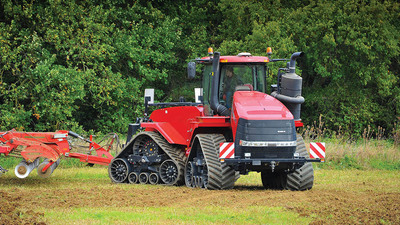
Similar to Case IH's own CVTs as used in its long wheel-base Puma, Optum and Magnum ranges, the transmission developed with ZF is also a four range, hydro-mechanical unit.
With four mechanical ranges, it means there is 100 per cent mechanical transfer of power at four points within the Quadtrac's total speed range, which is also said to never drop below 50 per cent mechanical transfer.
The transmission is fully automatic, with it deciding what mix of mechanical and hydraulic power transfer are required to achieve the desired speed.
SIGNIFICANT
Under load you can feel the range changes slightly, but nothing too significant.
Even these are smoother than the changes in the powershift version, and there are 16 of them to put up with.
In addition, because of the lack of clunky gear changes which have the potential to produce shock loads, this should have a positive and less wearing effect on the tractor's drivetrain and track units, not to mention drawbar pins, implement pivot points and implement shear bolts.
One of the downsides of a CVT is slightly less engine braking compared to a powershift version. This slight deficiency is made up for by savage brakes which will stop the 27 tonne beast on a sixpence.
540 CVX specifications
Engine: 12.9-litre, six-cylinder, FPT
Power: 543hp (rated), 613hp (maximum)
Maximum torque: 2,540Nm at 1,400rpm
Transmission: four range, hydro-mechanical, continuously variable
Weight: 27,417kg
Service intervals: 600 hours engine, 1,200 hours transmission
Retail price: £434,995
Controls
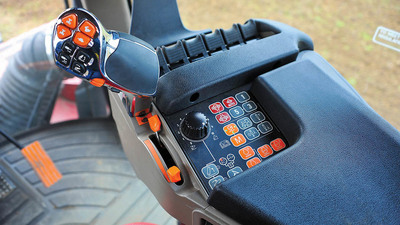
In addition to performance gains, the CVX is much easier to operate compared to a powershift version - there are no gears to think about, no engine revs to think about, just pick a target speed and let the tractor do all the work.
As well as in-field operation, this also makes it much easier to drive on the road.
Principally, the controls are exactly the same as all Case IH CVX tractors from the Maxxum range upwards.
This sees a large proportional lever take care of speed selection, or a foot pedal can also be used. The latter replaces the powershift Quadtrac's deceleration foot button.
Integrated into the lever is a scroll wheel which offers finer adjustment of speed. Three virtual transmission ranges to work within can also be set, offering three different top speeds, adjusted via the scroll wheel and toggled between via buttons.
Transmission aggression can also be altered in three levels by the press of a button.
SIMPLE
It is a simple set of controls which take little time to fathom, although the ‘split' throttle can have some people scratching their heads.
This allows you to set an upper and lower engine rev limit, making the transmission work within a rev window of your choosing. For instance, this may come in handy if you need a few revs to keep a drill's oil flow up, for example.
FG VERDICT
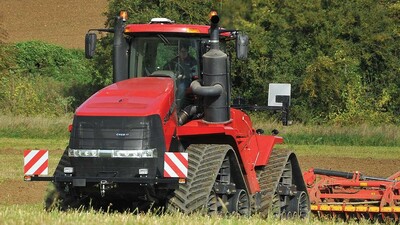
Purely from an operational point of view, the CVT version of the Quadtrac wipes the floor with the powershift. It is easier to operate, the transmission is smoother and is a lot more responsive. It is still a decent load lugger too, with the 540 CVX pumping out a peak 613hp.
The CVX will not suit everyone though. The powershift version is still available with more power, is cheaper and, depending on situation, has the potential to be more efficient.
But with the ability to more accurately and easily control working speeds, the CVX Quadtrac could prove to be a little more versatile, now able to better carry out jobs such as lighter top work, drilling, grain chasing, and possibly slurry application.
Ease of use will also make it simpler for less experienced operators to get the most out of the machine.










